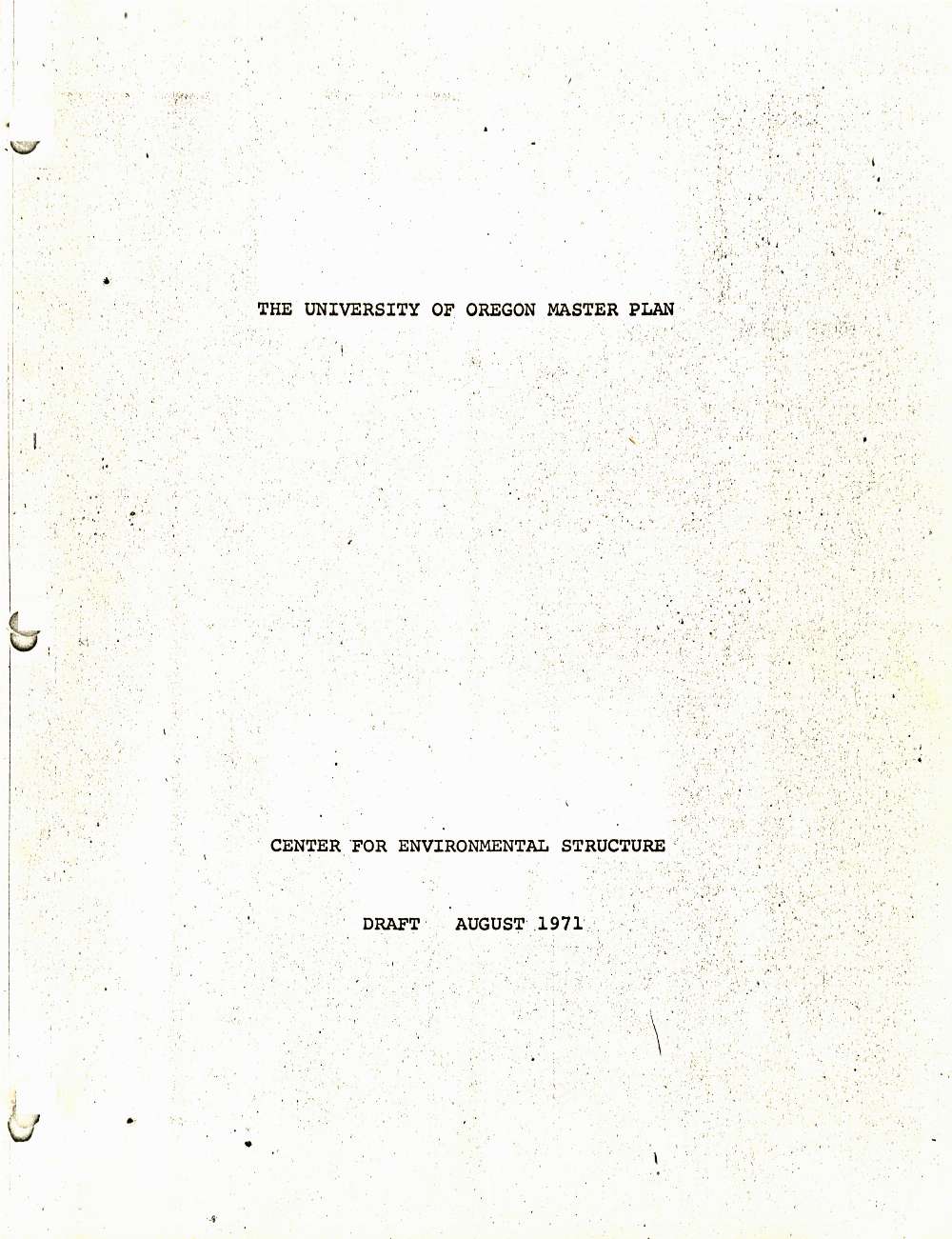
Master Plan for the University of Oregon: Theory and Practice
01/08/1971403-page second draft of a project report on the preparation of a master plan for the University of Oregon. The report has to halves; Part 1 deals with theory and Part 2 deals with practice. Part 1 outlines the theoretical ideas considered essential to the C.E.S. planning theory, and could be treated as a theory which replaces the predominant theory of master plans. In Part 2 this theory is applied to the University of Oregon, by constructing a full scale master plan, according to the tenets of the theory. Part 1_Theory includes six chapters and Part 2_Practice includes three chapters. Chapter 1) The Function of a Master Plan; Chapter 2) Participation; Chapter 3) Balance; Chapter 4) Piecemeal Process; Chapter 5) The Emergence of a Whole; Chapter 6) Administrative Processes deal with the theory and they were more or less complete. Chapter 7) Patterns contains eighty two patterns, also more or less complete, as well; Chapter 8) the Diagnosis then at a preliminary level, illustrates the form in which the final diagnosis should be organized; Chapter 9) Projects includes indicative information about approximately 20 projects which could be developed by the University of Oregon in the twenty years to follow, as well as a sample project for the College of Education.
-
A New Approach to Design and Construction Management
A new kind of design/construction/management process, especially for large projects, is required, which will allow the building to be conceived, designed and built so that it comes to life. Below are the ground rules of such a process, already tried ...
-
Development of first Patterns and Pattern Languages
The first patterns were developed in 1967 by a group of people working together with Christopher Alexander in the Center for Environmental Structure. Between 1968 and 1976 the first pattern languages were developed and tested for particular projects undertaken by ...
-
Master Planning as a Dynamic Process - Organic Order and Piecemeal Growth
It is simply not possible to fix today, in a Master Plan, what the environment should be like in the future, and then to steer the piecemeal process of development toward that fixed, imaginary world. Instead, planning and construction will ...
-
"Thick Walls" Pattern
01/01/1967
Early formulation of pattern on a 2-page format with: Title of Pattern, Photo, Statement of Problem, Solution, Diagram, Author/s, Date, revision Date and Notes; included in “A Pattern Language”, pattern #196 Thick Walls. Revised in Sep-1970 .
-
"Entrance Location" Pattern - Original
01/07/1968
Early formulation of pattern on a 2-page format with: Title of Pattern, Photo, Statement of Problem, Solution, Diagram, Author/s, Date, revision Date and Notes. Revised in Jun-1970.
-
"Entrance Shape" Pattern
01/07/1968
Early formulation of pattern on a 2-page format with: Title of Pattern, Photo, Statement of Problem, Solution, Diagram, Author/s, Date, revision Date and Notes. Revised in Sep-1970 .




 Go Back
Go Back